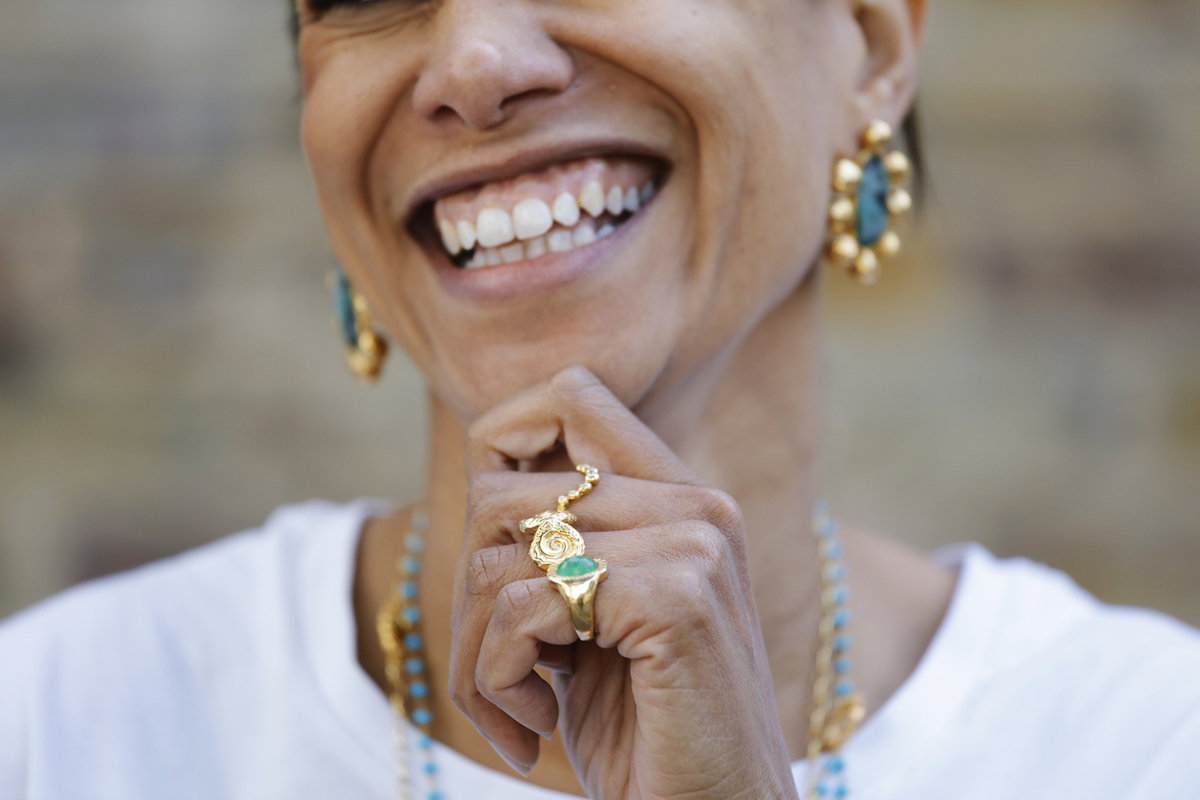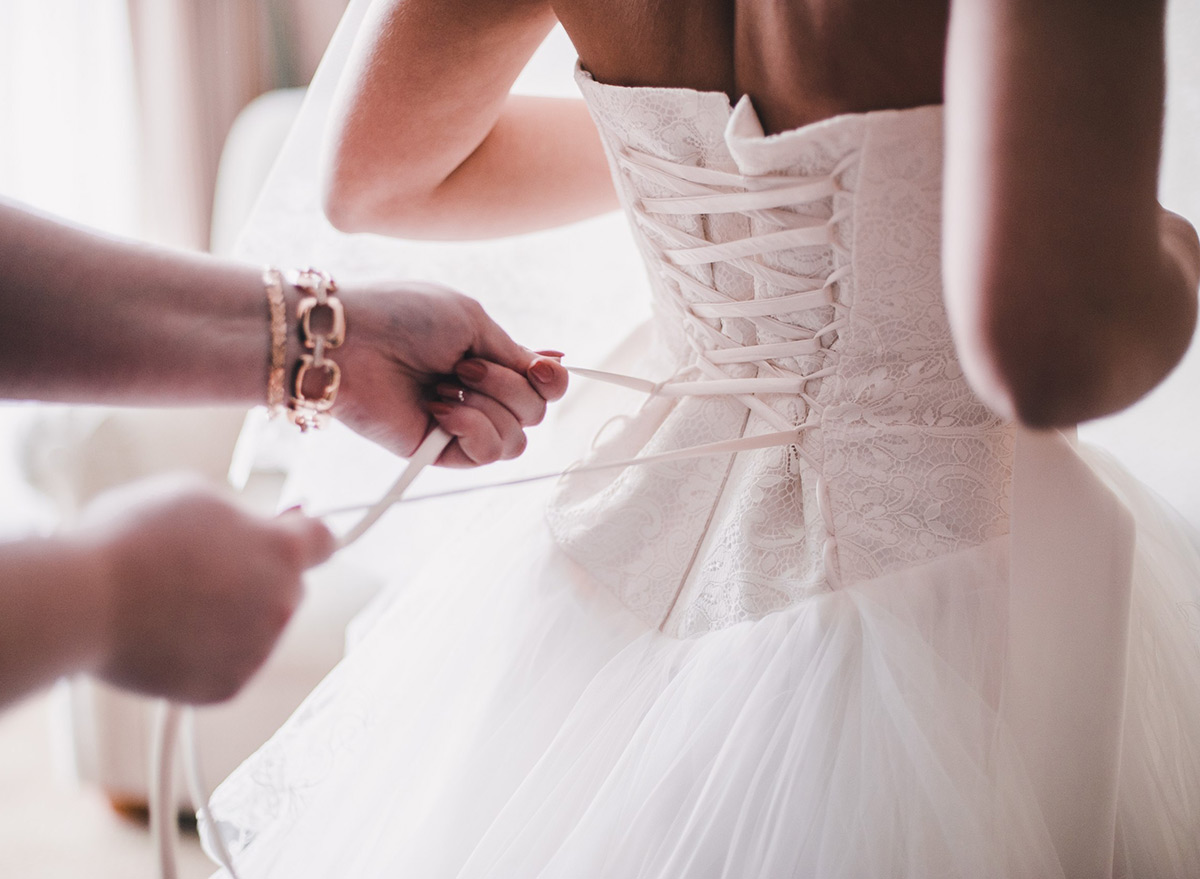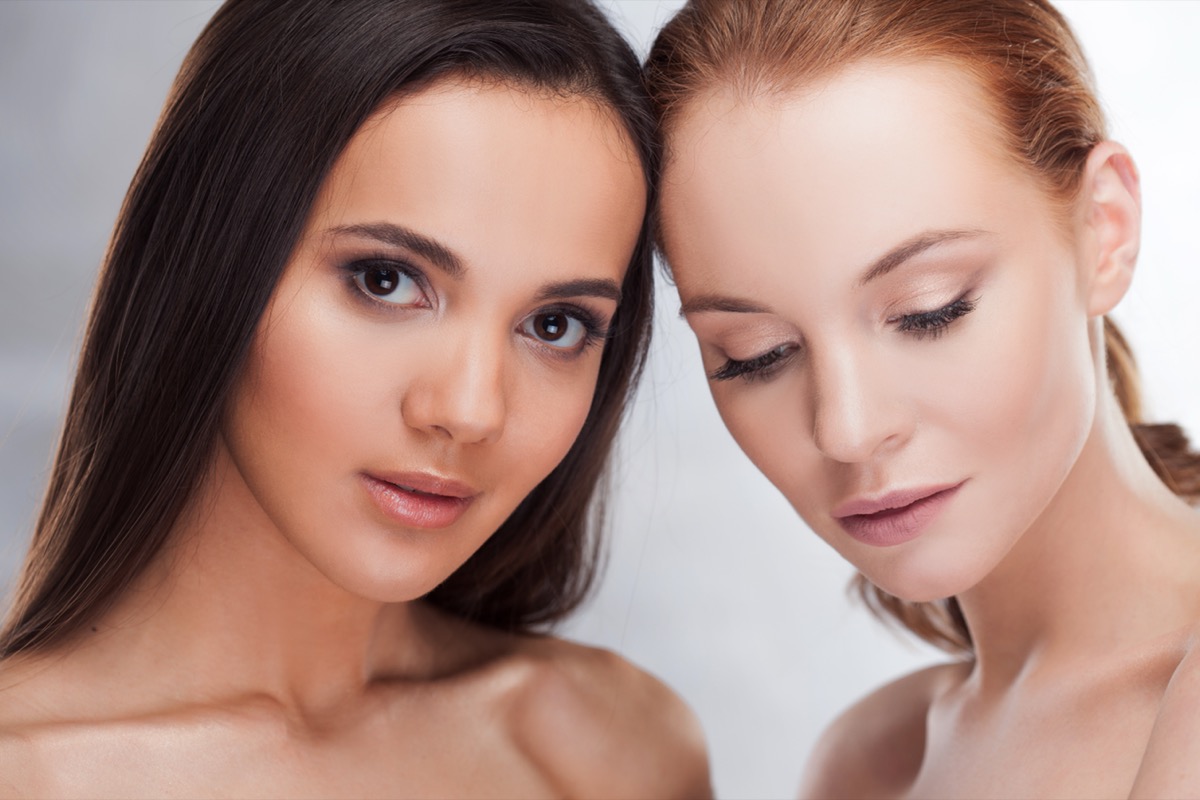How to Find Your Skin Undertones, According to Beauty Experts

Whether it’s your makeup regimen or your fashion choices, style is all about self-expression. And sometimes, it’s fun to throw caution to the wind and experiment with color to your heart’s content. However, if you want to enhance your natural aesthetic, experts say you may benefit from becoming more attuned to your skin undertones.
Celebrity makeup artist Sloane Casper, who works with Ring My Belle, notes that everyone’s skin has hints of blue, green, yellow, and red: “Undertone simply tells us how much of which color is present.”
“Warm, cool, and neutral undertones are the three major types,” adds Sara Millecam, a master medical esthetician and founder at Lash Lift Store. “There are hints of blue, pink, or red in the cool undertones. Neutral undertones combine warm and cool tones, whereas warm undertones are yellow, peach, or golden in color.”
Unlike skin tone, which can change with sun exposure, skin undertones don’t change—and therefore have a more enduring impact on your fashion choices.
“For clothing, warm undertoned people look simply stunning in earthy colors like reds, oranges, and yellows (among others), whereas blues, purples, pinks, and cool greens perfectly compliment cool tones. Neutrals can yet again easily fall into either side of the spectrum,” explains Millecam.
“For makeup, foundations and lipsticks with bases that are blue or pink usually go well with people who have cool undertones. Yellow or gold-based products look good on individuals with warm tones. Meanwhile, neutral-toned skins can wear both cool and warm shades,” she shares.
Not sure how to identify your own skin’s undertones? Read on to learn about six simple tests you can try right now to get your answer.
RELATED: 6 Neutral Colors That Work With Every Skin Tone, Stylists Say.
1
The vein test

If you could peer through your skin, your veins would appear red thanks to the blood pumping through them. However, they take on a different shade when we view them with the naked eye because the color is altered by the shade of our skin, which is layered on top. That’s why the first way to determine your skin undertones is to look at the veins in your wrist.
“If they look blue or purple, then you have cool undertones, whereas green suggests warm ones,” says Millecam. If it’s difficult to identify whether your veins appear more green or blue, you could have average or neutral undertones.
2
The jewelry test

Next, determining which jewelry is most flattering on your skin can also serve as a clue regarding its undertones.
“Think about whether you look better in silver or gold jewelry,” suggests Millecam. “Silver usually looks great on people with cooler complexions, while gold best suits those with warmer complexions.”
“If you can rock both, you are neutral,” adds Casper.
RELATED: 4 Best Colors to Wear If You Have Warm Skin Undertones, Stylists Say.
3
The white paper test

If you have a white sheet of paper at home, you can try yet another simple test to find your skin undertones.
“Hold a plain white piece of paper next to your face in natural lighting conditions,” says Millecam. “If your skin appears ruddy colored, then it has cool undertones; otherwise, if it looks yellowish rather than distinctively pink or yellow, then it has warm undertones. If it doesn’t look distinctly yellow or pink, then you might have neutral tones.”
4
The wedding dress test

Casper says that your choice of wedding dress may also offer a window of insight into your skin undertones.
“For my brides, if you love yourself in true white, you’re cool. If you feel better in ivory or off-white shades, you’re warm. And if you look stunning in both, and it was super hard to say yes to the dress, you’re neutral,” makeup artist Elaina Badro tells Best Life.
RELATED: 5 Best Colors to Wear If You Have Cool Skin Undertones, Stylists Say.
5
The comparison test

Another way to find your skin undertones is to compare your complexion to someone else’s.
“The hues tend to appear more if you compare people side by side. You’ll visually see ‘green’ when comparing an olive undertone individual to someone who is more ‘pink,'” Badro explains.
6
The tanning test

Finally, how your skin reacts to the sun may also help you determine whether your skin has warm, cool, or neutral undertones. Though it’s, of course, inadvisable to go without sunscreen for the sake of the test, the experts say you should pay attention to how your coloring changes if you happen to get more unprotected sun exposure than normal.
Badro says people with warm, olive-based undertones tend to develop bronze-colored tans, whereas people with cool, pink undertones tend to tan more red or burn more frequently.
“A combination of the two reactions may indicate neutral undertones,” adds Millecam.